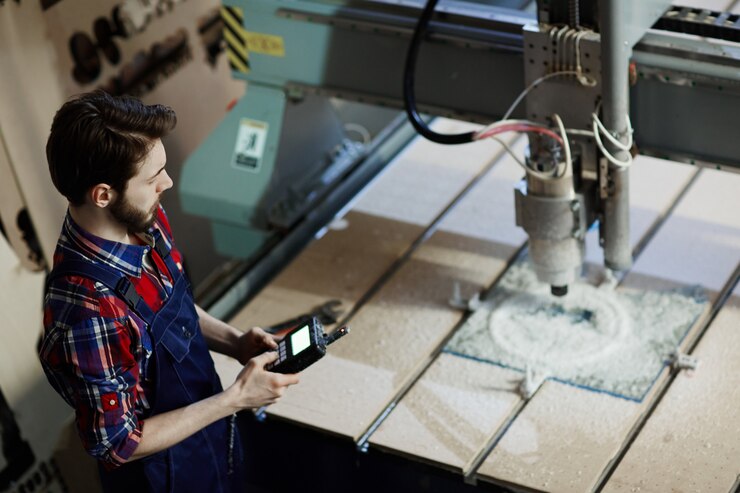In the realm of Computer Numerical Control (CNC) machining, precision is paramount. From aerospace components to intricate medical devices, the accuracy of CNC machining directly impacts product quality and performance.
One crucial aspect often overlooked is the role of fixtures in ensuring tight tolerances and repeatability. This article explores the art of tightening and how the implementation of universal CNC fixtures can significantly enhance accuracy in machining processes.
Understanding the Importance of Tightening
Before delving into the specifics of CNC fixtures, it’s essential to grasp why tightening is critical in CNC machining. Tightening refers to the process of securing workpieces firmly in place during machining operations.
Any looseness or movement can lead to dimensional errors, surface imperfections, and ultimately, product failure. Tightening ensures that the workpiece remains stable and aligned throughout the machining process, resulting in precise and consistent outcomes.
Challenges in Traditional Fixturing Methods
Traditionally, CNC machining tools from ridiculousmachinetools relied on custom fixtures designed for specific parts. While effective for dedicated production runs, this approach poses several challenges:
Cost and Lead Time: Custom fixtures require time and resources to design, manufacture, and set up. This leads to increased costs and longer lead times, particularly for small-batch or prototype production.
Limited Flexibility: Custom fixtures are tailored to specific part geometries, limiting their reusability across different projects or variations of the same part.
Setup Complexity: Each new part typically necessitates the design and calibration of a new fixture, prolonging setup times and increasing the risk of human error.
The Evolution of Universal CNC Fixtures
Universal CNC fixtures represent a paradigm shift in fixturing methodology. These fixtures are designed to accommodate a wide range of part geometries, offering versatility, efficiency, and cost-effectiveness. Key features of universal CNC fixtures include:
Modular Design: Universal fixtures consist of standardized components that can be reconfigured to suit various part shapes and sizes. This modular approach enhances flexibility and scalability, enabling rapid adaptation to changing production needs.
Quick Changeover: Unlike custom fixtures, which require extensive setup and calibration, universal fixtures facilitate quick changeovers between different parts. This reduces downtime and enhances overall productivity.
Adaptive Clamping Mechanisms: Universal fixtures incorporate adaptive clamping mechanisms that automatically adjust to the contours of the workpiece. This ensures uniform pressure distribution and minimizes distortion, contributing to improved machining accuracy.
Integrated Sensing Technologies: Advanced universal fixtures may integrate sensing technologies such as force sensors or proximity probes to monitor clamping forces and detect any deviations during machining. Real-time feedback enables proactive adjustments, ensuring optimal tightness and part integrity.
Best Practices for Tightening with Universal CNC Fixtures
While universal CNC fixtures offer significant advantages, proper implementation is crucial to maximize their effectiveness. Consider the following best practices:
Optimize Clamping Strategy: Tailor the clamping strategy to the specific requirements of each part, considering factors such as material properties, surface finish requirements, and machining forces. Avoid over-clamping, which can induce deformation, and ensure sufficient clamping force to prevent slippage.
Verify Alignment and Squareness: Before initiating machining operations, verify that the workpiece is correctly aligned and squared within the fixture. Misalignment can lead to skewed geometries and dimensional inaccuracies, undermining the effectiveness of the fixture.
Utilize Datum Points: Establish clear datum points on the workpiece and fixture to ensure consistent positioning and orientation. Datum points serve as reference surfaces for machining operations, facilitating accurate measurements and alignments.
Monitor Clamping Force: Regularly monitor clamping force throughout the machining process, especially for long-duration operations or materials prone to thermal expansion. Deviations in clamping force may indicate fixture fatigue or part distortion, warranting immediate attention.
Implement Redundant Safety Measures: Incorporate redundant safety measures, such as secondary clamping mechanisms or part presence sensors, to mitigate the risk of part ejection or fixture failure. These measures provide an additional layer of protection against machining errors and ensure operator safety.
Regular Maintenance and Calibration: Establish a regular maintenance schedule for universal CNC fixtures to ensure optimal performance and longevity. Inspect components for wear and damage, and perform routine calibration to maintain alignment and accuracy. Proactive maintenance minimizes the risk of unexpected failures and preserves the integrity of machining operations.
Documented Standard Operating Procedures (SOPs): Develop comprehensive SOPs for fixture setup, operation, and maintenance, documenting best practices and troubleshooting guidelines.
Standardizing procedures promotes consistency across machining processes, reduces reliance on individual expertise, and facilitates knowledge transfer within the organization. SOPs serve as valuable resources for training new operators and troubleshooting potential issues, ensuring continuity and efficiency in CNC machining operations.
Conclusion
The art of tightening in CNC machining is a multifaceted endeavor, encompassing design, technology, and best practices. Universal CNC fixtures represent a transformative approach to fixturing, offering unparalleled flexibility, efficiency, and accuracy.
By embracing the principles outlined in this article and leveraging the capabilities of universal fixtures, manufacturers can elevate the precision and reliability of their machining processes, driving excellence in product quality and performance.




